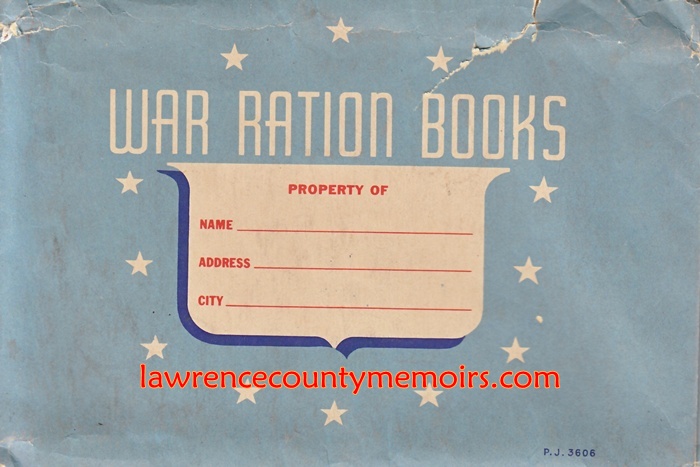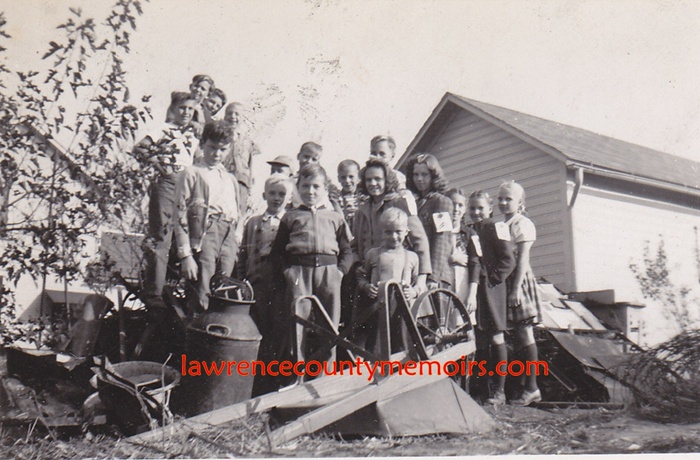During 1940-1941, with active hostilities raging in Europe and the Pacific Ocean, the United States was emerging from the tough times of the Great Depression and was doing its best to remain officially neutral. With war inevitable, and the British and other allies seeking military and financial support, the U.S. government began taking steps to control prices of most retail goods and ration scarce items needed for the military effort. The Office of Price Administration (OPA), under the Office of Emergency Management (OEM), was created in August 1941 to oversee this effort in the event of the United States’ entry into the war.
Throughout World War I (1914-1918) the federal government successfully urged Americans to conserve and limit consumption of certain vital war materials, but did not enact any official rationing regulations. With the magnitude of the effort it would take to defeat the combined might of Germany, Italy, and Japan during World War II it was obvious it would require a much more widespread and determined effort this time out.
One of the initial rationing efforts began on August 16, 1941, when the U.S. government ordered that gasoline sales in seventeen eastern states, including Pennsylvania, would be reduced by 10%. It apparently not a very popular initiative as an editorial in the New Castle News of October 16, 1941, indicated, “Gasoline rationing in the East will be continued by order of Ickes (Secretary of the Interior Harold L. Ickes), apparently on the theory that if there is no gasoline shortage, there should be one.”
After the surprise Japanese attack on Pearl Harbor, Hawaii, on December 7, 1941, the OPA – which would become an independent agency in late January 1942 – went to work. Tires, and the vital rubber they were made of, were the first item to be rationed beginning a few days after the attack on Pearl Harbor. This became especially important after the Japanese invaded the Dutch East Indies, a major supplier of rubber and oil, in early January 1942.
Automobile sales to civilian customers were frozen in January 1942 and a month later all auto plants were converted to begin production of military vehicles such as Jeeps, transport trucks, tanks, aircraft, and artillery. Civilian restrictions were all imposed on items such as bicycles, typewriters, sewing machines, refrigerators, vacuum cleaners, radios, and phonographs. Numerous other materials were later rationed to include leather shoes, nylon, silk, gasoline, and kerosene/fuel oil.
Various foods were soon in short supply because much of the processed and canned foods were being shipping overseas to our military, the rationing of tires and gasoline limited domestic shipments of fresh foods, and active combat zones and restrictions on imports severely limited available stockpiles of coffee and sugar. Food rationing began with the freezing of sugar sales in late April 1942, while a program was established for its distribution. Each family member was subsequently limited to ½ pound a week. Coffee was the next food to be rationed beginning in November 1941, followed by meat, butter, cheese, jam, canned milk, processed foods, etc…
To evenly distribute sugar – and other food items in the coming months – the OPA began issuing ration books on May 5, 1942. War Ration Book No. 1, the “Sugar Book,” was filled with stamps that could be redeemed for the right to purchase sugar. For example you still had to pay for the sugar, but you needed the correct stamp(s) to be able to purchase it. Each family was initially required to report how much sugar they had in stock, and those in possession of a large amount had a corresponding number of stamps removed from their book.
Thousands of local rationing boards were setup across the country to classify who was eligible for what stamps and to efficiently distribute the ration books. In late December 1941 longtime New Castle attorney William J. Caldwell was named chairman of the rationing effort in Lawrence County, to be assisted by Russell C. Melvin of New Castle and Charles W. Carbeau of Ellwood City. Caldwell was charged with setting up and overseeing the various rationing boards within the county.
The New Castle News reported on May 5, 1943, “The OPA reported – on the first anniversary of food rationing in the United States – that 131,600,000 copies of ration book 1 and 126,331,000 copies of ration book 2 have been distributed, with book 3 to be sent out through the mails in June. An estimated 8,775,706,000 pounds of sugar have been rationed since the program began on May 5, 1942, one year ago today.”
The ration books became more and more complicated to use and understand. Each stamp was numbered and had a picture (airplane, tank, warship, etc…), but was not identified with any one item it could purchase. To prevent counterfeiting or other nefarious activities periodic announcements in the newspapers were made indicating which stamp (such as “Airplane Stamp No. 12”) could be used to purchase a particular item that week. Ration books later contained large colored stamps as well. For example red stamps were good for meat, fish, and dairy products. Small colored tokens were also distributed as a way to provide change for smaller purchases.
Of course many people grumbled about the system and a prevalent black market operated in most locales. Despite that most Americans supported that rationing effort and mass propaganda initiatives by the federal government certainly helped out. Many helped out by planting small Victory Gardens in any available space they could find. It is estimated that by the end of the war over twenty million such gardens had been planted, supplying as much as 40% of the nation’s vegetables. Kids primarily supported Junk Rallies (scrap metal drives) for the government, collecting anything they could scrounge up to include tinfoil from gum wrappers.
Americans rejoiced when Japanese forces surrendered on August 15, 1945, to end the active hostilities of World War II. As the nation basked in victory the rationing of the most major items was phased out by the end of the year. The rationing of sugar continued until June 1947 when supplies finally returned to normal pre-war levels. It was certainly a tough time on the home front during World War II, but compared to other regions of the world Americans had it easy.
 An example of the small folder used to hold War Ration Books issued during World War II. |  The back of the War Ration Book folder provides some propaganda-driven nutrition facts. |
 Examples of War Ration Book No. 1, the so-called “Sugar Book,” first issued in early May 1942. These books belonged to the Clarence Cross family of Slippery Rock PA. Full Size |
 A few remaining stamps from the inside of a War Ration Book No. 1. Full Size |
 War Ration Book No. 2. Full Size |
 The various red and blue stamps contained with War Ration Book No. 2. Full Size |
 An example of War Ration Book No. 3, first distributed in October 1943. These books belonged to Andy Pasqueriello (age 28) and Juliann Pasqueriello (age 3) of Home Street in New Castle. |
 Some of the stamps contained in War Ration Book No. 3. Newspapers would print periodic lists indicating which stamp could be utilized to purchase a particular item. |
 The back of War Ration Book No. 3 contained some valuable instructions. Notice at the bottom it warns, “If you don’t need it, DON’T BUY IT.” |
 Children pose for this photo after participating in a “Junk Rally” in the village of Chewton. Barbara Hoziak is standing second from the right end. To see more photos like these chick on: JUNK RALLY. (1943) (Photo courtesy of Barbara Hoziak Hairhogger) Full Size |




Comments
Sandra proia #
I have a ration book from 1941 it has wheat stamps coffee stamps sugar stamps is it of any value
Comment